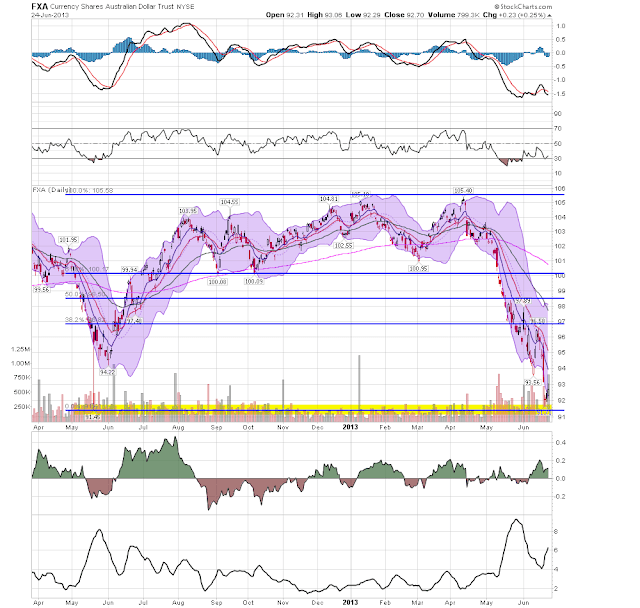- by New Deal democrat
According to ECRI, tomorrow will mark the end of the first year of a recession. During that time, GDP, real consumer spending, real incomes, industrial production, and employment have all risen (perhaps explaining why there hasn't been an update to their "telltale chart" in over half a year). Turning to May monthly data, last week only the Chicago PMI was down, to a point just slightly into expansion. All the other monthy data was positive: personal income, spending, savings, durable goods, consumer sentiment, Case-Shiller house prices, and new home sales.
Turning to the high frequency weekly indicators, last week I noted that two of the long leading indicators, interest rates and mortgage applications, had turned negative, while money supply remained positive. That pattern modified a little this week:
Interest rates and credit spreads
- 5.11% BAA corporate bonds up +0.12%
- 2.33% 10 year treasury bonds up +0.13%
- 2.90% credit spread between corporates and treasuries down -0.01%
Housing metrics
Mortgage applications from the Mortgage Bankers Association:
- +2% w/w purchase applications
- +16% YoY purchase applications
- -5% w/w refinance applications
Housing prices
- YoY this week +7.9%
Real estate loans, from the FRB H8 report:
- unchanged w/w
- up +0.9% YoY
- +2.7% from its bottom
Money supply
M1
- -0.6% w/w
- +1.8% m/m
- +8.9% YoY Real M1
M2
- unchanged w/w
- -0.5% m/m
- +5.4% YoY Real M2
Employment metrics
American Staffing Association Index
- 93 unchanged w/w, unchanged YoY
- 346,000 down -8,000
- 4 week average 345,750 down -2500
- $143.1 B for the first 19 days of June vs. $132.0 B last year, up +$11.1 B or +8.4%
- $148.1 B for the last 20 reporting days vs. $139.4 B last year, up $8.7 B or +6.2
Transport
Railroad transport from the AAR
- unchanged carloads YoY
- +3100 carloads or +1.8% ex-coal
- +6600 or +2.7% intermodal units
- +6400 or +1.2% YoY total loads
- Harpex -02 to 401
- Baltic Dry Index up 134 to 1161
Consumer spending
- ICSC +1.1% w/w +1.8 YoY
- Johnson Redbook +2.8% YoY
- Gallup daily consumer spending 14 day average at $87 up $18 YoY
Oil prices and usage
- Oil $96.56 up +$2.87 w/w
- Gas $3.57 down -$0.06 w/w
- Usage 4 week average YoY -0.3%
Bank lending rates
- 0.23 TED spread unchanged w/w
- 0.190 LIBOR down -0.003% w/w
JoC ECRI Commodity prices
- down 0.53 to 120.75 w/w
- +5.43 YoY
Consumer spending remained positive, but less so than recently. More positives included house prices, YoY purchase mortgage applications, overnight bank rates, both rail and shipping transport. Weak positives included jobless claims, tax withholding, and real estate loans. Gas prices and commodity prices rate as neutrals this week.
My conclusion this week is the same as last week: the sharp rise in interest rates is definitely of concern, but it hasn't lasted long enough to seriously signal a recession next year. Housing is weakening but still positive. In terms of coincident indicators of the economy, consumer spending and initial jobless claims, while trending more weakly positve and sideways, respectively, for the last month or so, show no signs of rolling over.
Have a nice weekend.

























